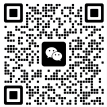Advantages and Limitations
This data collection technique of interviews has many advantages. It is the most direct way for market researchers to communicate with the interviewees. Through this face-to-face way, the method of interviews can collect the full range and depth of information from the interviewees. This kind of information is very useful and may not be collected through other ways. And this method can be flexible with the different interviewees and the interviewers can determine and choose the questions based on their thoughts and objectives to discuss with the interviewees and obtain the data and information they need. Besides, it is also a good way to develop the relationship with the clients. (Creswell, pp.136, 1994)
And data collection technique also has many disadvantages and may lead to the biases of the collected information, because the use of this method may take much time, may be hard for people to analyze and compare, may be costly and the interviewer may bias the responses and opinions of the interviewees. On the one hand, the interviewees may not tell the full information they know or may tell the wrong information to the interviewers. And on the other hand, the interviewers may misunderstand the information from the interviewees and causes the bias during the process of data collection.
3.3.2.2 Participant Observation
According to Collis and Hussey (2003), the method of participant observation is where the researcher becomes a working member of the group or situation to be observed. The aim of this method is to understand the situation from the inside: from the viewpoints of the people in the situation, and the researcher shares the same experiences as the subjects and this form of research can be particularly effective in the study of small groups/small firms. Participant observation can be overt (everyone knows it is happening) or covert when the subjects being observed fro research purposes are unaware it is happening (Collis and Hussey, 2003).
In this research, the author works as an internship work in Ken Bang Business Investigation Company, and this company is one of SMEs in China. This company is a good case for the author to study the research question about the current human resource management practices of SMEs in China, and this is the reason for the author to choose this company for internship. During the period of internship, the author also studies the research questions through observation in daily work of the company.
3.3.3 Sample Selection
Besides the company in which the author worked during the period of internship, the author also chose other ten small and medium sized enterprises in the sample for research. There are many SMEs in the whole China, so it is impossible for the research to include all SMEs in the sample. Because the author was working in Beijing during the period of internship, so ten SMEs in Beijing were randomly selected in the sample.
3.3.4 Access
I contact with these SMEs in the sample to make an appointment with their directors and managers for interviews. The interviews will be conducted in these companies.
Based on the method of interview to collect primary data from the directors or managers of these selected SMEs, I just simply make the sources anonymous and the information about the interviewees such as the name and position will be kept in confidentiality. This technique will not affect the data collection and the research. The true and effective data and information collected from these anonymous sources will be used to analyze the research questions.
3.4 In-depth Interview Design
It is true that the quality of the data to a large extent depends upon the structure of the interview as well as the design of each individual question (Saunders et al., 2003). Interview is the method that may take much time and lead to the bias. So we must design the appropriate questions and design the process of the interview. In order to collect the data and information we need for the analysis, I design the questions according to our research aims and objectives.
The research aim of our paper is to investigate the current human resource management practices of Chinese SMEs. Based on this main research aim and other research objectives that have been decided before the research, the research should focus on the current practices of human resource management in Chinese SMEs including the status quo of the current human resource management for Chinese SMEs, the main problems involved with Chinese SMEs in human resource management. So the questions designed for the interview must help collect the data and information focusing on these aspects relating to research aim and objectives. The collected data must help the study to realize the research objectives.
Besides the contents of the questions, the process of interview is also very important. I plan to start with some simple closed format questions focusing on some general information about human resource management of Chinese SMEs and then majority of questions with open format are created during the interview for the interviewees to express their opinions freely. This way that asking the general questions first and then discussing the in-depth questions gives both the interviewer and the interviewee more flexibility to communicate and discuss the issues. One important point for us to attention is that we should ask the questions in a clear, easy and simple way for the interviewees to understand and discuss.
The designed questions for the interview are summarized as follows:
1) Do you think human resource management is important to the development of the enterprise?
2) What do you think of the current human resource management in your enterprise?
3) What are the differences between practices of human resource management in China and those in the western developed countries?
4) What do you think of the role of human resource management to SMEs in China?
5) Do you think the current human resource management in your enterprise is effective or not?
6) What are the main problems involved with the human resource management in your company?





